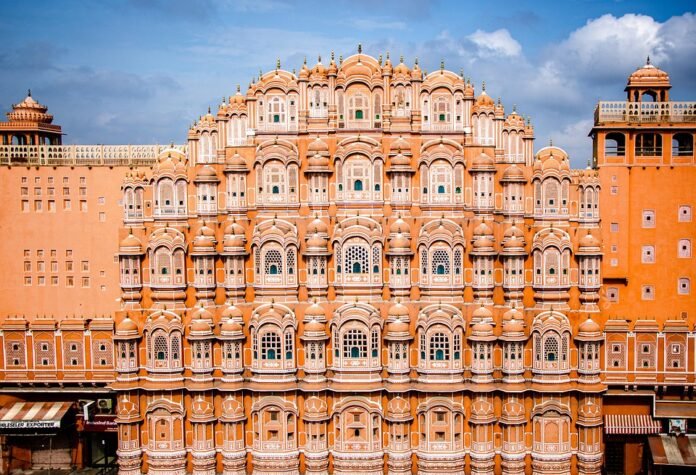Of course. Here is an article on India’s pursuit of Olympic glory.
The Olympics Dream: India’s Pursuit of Sporting Glory
For a nation of over 1.4 billion people, the Olympic Games are more than just a sporting spectacle; they are a stage for national aspiration, a barometer of progress, and a quadrennial test of collective spirit. The story of India at the Olympics is a tale of a gilded past, a long and often frustrating middle, and a present that is finally crackling with promise. It is the story of a nation slowly but surely awakening to its immense sporting potential.
The Golden Past: A Legacy Forged in Hockey
India’s Olympic journey began with a blaze of glory. From 1928 to 1956, the Indian men’s hockey team was an unstoppable force, winning six consecutive gold medals. This was the era of the legendary Dhyan Chand, the "Wizard," whose stick-work was so magical that it sparked disbelief and awe across the globe. The national anthem playing in Amsterdam, Los Angeles, and Melbourne became a symbol of a colonized nation asserting its identity and excellence on the world stage. This golden era established a legacy, but it also set a benchmark that, for decades, seemed impossibly high to replicate.
The Long Wait and Sporadic Sparks
After the hockey team’s dominance waned, India entered a long period of Olympic drought. Medals were few and far between, and a gold medal seemed like a distant dream. The nation that produced world-class doctors, engineers, and scientists struggled to create a robust ecosystem for sports. Cricket’s overwhelming popularity overshadowed other disciplines, diverting attention, funding, and grassroots participation.
Yet, even in these lean years, individual brilliance occasionally pierced the gloom. Wrestler K.D. Jadhav’s bronze in 1952 was a flicker of hope. Decades later, Leander Paes’s tennis bronze in 1996 broke a long dry spell and reignited a flicker of belief. In 2000, Karnam Malleswari became the first Indian woman to win an Olympic medal, her weightlifting bronze in Sydney proving that Indian women were a force to be reckoned with. These athletes were not products of a system; they were heroes who succeeded in spite of it, their victories serving as powerful beacons for a generation to come.
The Turning Point: A New Millennium, A New Mindset
The true seismic shift began in the 21st century. The moment that arguably redefined India’s Olympic dream came at the 2008 Beijing Games. When Abhinav Bindra, with monk-like focus, shot a near-perfect 10.8 in his final attempt to win the 10m Air Rifle event, he didn’t just win a gold medal; he shattered a century-old psychological barrier. He became India’s first-ever individual Olympic champion.
Bindra’s gold proved that an Indian athlete could reach the absolute pinnacle of sport. This victory, coupled with medals from wrestler Sushil Kumar and boxer Vijender Singh, signalled a change. The 2012 London Olympics saw India return with its then-largest haul of six medals, confirming that Beijing was not a fluke.
The Modern Revolution: System, Support, and Success
What changed? The answer lies in a conscious, systemic shift. The Indian government, recognizing the power of sporting success, launched crucial initiatives. The Target Olympic Podium Scheme (TOPS) began providing elite athletes with personalized support, funding for international training, world-class coaching, and sports science expertise. At the grassroots level, the Khelo India Games were established to identify and nurture young talent from every corner of the country.
This top-down support was complemented by the rise of private sector involvement, with foundations like JSW Sports and the Olympic Gold Quest providing professional management and financial backing.
The results of this concerted effort were on full display at the Tokyo 2020 Olympics. It was a watershed moment. India returned with seven medals, its best-ever performance. The crowning glory was Neeraj Chopra’s historic javelin throw, which secured India’s first-ever athletics gold. It was a moment of pure national ecstasy. The men’s hockey team ended a 41-year medal drought with a spirited bronze, signalling a renaissance. Medals in wrestling, boxing, badminton, and weightlifting showcased a newfound depth and diversity in India’s sporting talent.
The Path Ahead: From Dream to Reality
While the recent successes are cause for celebration, the journey is far from over. Challenges remain, including the need for better infrastructure at the district level, fighting bureaucratic inertia in sports federations, and fostering a widespread culture that values physical literacy as much as academic achievement.
However, the narrative has fundamentally changed. The Olympic dream is no longer a wistful fantasy. For young Indian athletes, winning an Olympic medal is now an audacious but achievable goal. They have role models who look like them, who have walked the path and tasted glory.
From the hockey fields of Amsterdam to the athletics track in Tokyo, India’s pursuit of sporting glory has been a marathon, not a sprint. Today, the nation stands at an exciting crossroads, driven by a new generation of fearless athletes and supported by a burgeoning ecosystem. The tricolor is rising more frequently on the Olympic podium, and for a billion people, the dream is finally, vibrantly, coming into focus.

